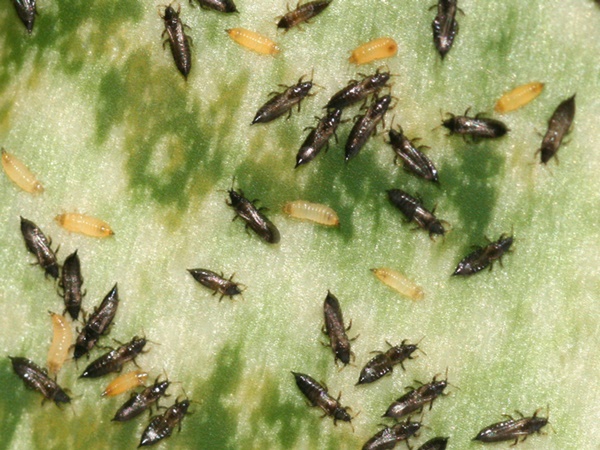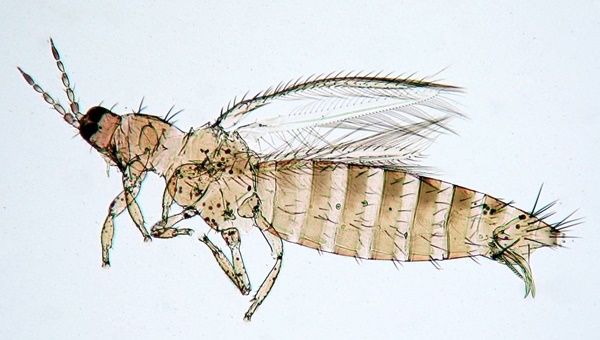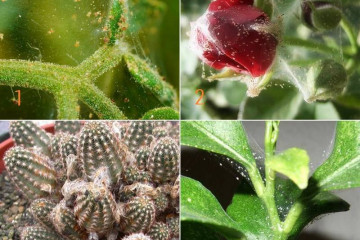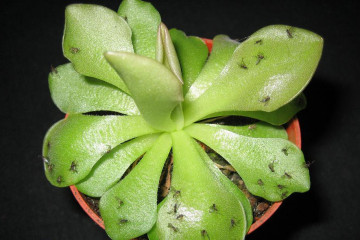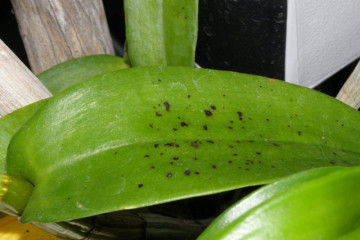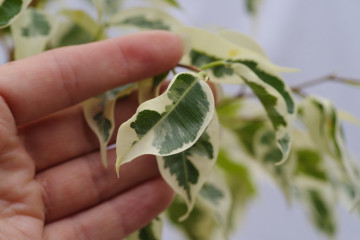Thrips on indoor plants: options for how to get rid of
Content:
Indoor plant lovers who breed them are often faced with the need to protect them from pests. Thrips are very dangerous, they are a common insect, along with aphids, spider mites. If not taken in time, they can completely destroy the pot culture. This means that you need to react at the first sign of detection.
Thrips on indoor plants are quite common, because they do not really understand what exactly they eat (polyphages). Any kind of domestic flora can be their victim.
Description of thrips
Eating juices, thrips reproduce quickly and just as rapidly lead to significant damage to the green part of plants.
If you regularly examine the flowers, it will not be difficult to spot the insects, although they are very small.
The greatest danger comes from the species that carry the infection:
- greenhouse;
- Californian;
- tobacco thrips.
The degree of damage depends on the duration of the insect exposure. The flowers are deformed, black and white spots appear on them. The leaf plates begin to resemble fabric. It is especially annoying to find thrips on orchids and other valuable flowers.
Their description includes the following features:
- the body is thin and long;
- the size reaches 14 mm, although in common types - up to 2 mm;
- piercing-sucking mouth type;
- runs with the help of legs equipped with a tooth and a suction cup;
- nondescript, often black or gray color.
Also, individuals are equipped with small wings.
Main types
Due to the fact that the size of the insect is very small, it is difficult to immediately determine the type of thrips. Scientists distinguish up to 2000 species. 300 of them are found on the territory of the Russian Federation and neighboring countries. The list of the most common ones is as follows:
- variegated;
- decorative;
- dracaena;
- bulbous
- tobacco;
- rose-colored;
- California thrips.
By their name, you can determine which plants they like to attack. Ornamental can live both in the middle lane and in more northern regions. It can harm the Phalaenopsis orchid and other species of this plant, as well as the monstera palm, dieffenbachia. It is less than 2 mm in size and has a brown color.
Not all thrips are equally dangerous to plants, but there are hundreds of thrips that should be destroyed immediately. The pest consumes the juices of leaves and fruits, and also transfers diseases and leaves poisonous secretions on the flora. Thrips lives in secret, hiding in secluded places. Therefore, at the very beginning, it is not always possible to detect it in a timely manner.
Reasons for the appearance on indoor plants
There are several sources of thrips infection in plants. Their list:
- They migrate with the help of wings, flying through the windows of premises. The likelihood of penetration into the house increases in summer with wind.
- They penetrate with soil taken from the street.
- The risk when buying flowers is also significant, in a store or in a factory, they can be infected with thrips.
- We got along with a scion taken from friends.
Home remedies for thrips
Some fans of growing flowers at home have a lot of them, others prefer to take care of only one pet. One way or another, I do not want to allow the death of living greenery. Considering thrips on indoor plants and how to fight at home, it is important to know about the measures in order to take them on time. Having noticed only one pest, the florist will be able to protect the flowers from the whole invasion.
How to detect insects if they like to hide in order to apply this or that remedy in time:
- First, the discoloration of the foliage is striking.
- Inspection of the lower part of the plates is required. With brown spots, the likelihood of thrips damage increases.
- A late sign is the death of leaves and their deformation.
The process of exterminating insects is the more simple, the earlier it is started. Otherwise, it will take a lot of time. The more time elapses before taking action, the more the likelihood of the death of the flower and the transfer of the pest to neighboring greenery increases. The following order of extermination of insects is recommended:
- Isolation of the affected plant from others by transferring it to another room. In this case, care is taken not to shake off the larvae.
- Pests that are visible to the eye can be partially removed with a shower.
- Apply chemistry, special drugs.
Experts recommend treating the topsoil of the affected plant. Your best bet is to change the whole land. At the same time, the roots, the pot are washed and planted in new soil. The processing of the culture medium is done by calcining at high temperatures. The following drugs are used:
- Fitoverm, 2 ml ampoule dissolves in a glass of water. This will significantly detoxify the plant. All areas are sprayed: sick and healthy, after which they put a plastic bag on the plant and keep it in it for a day.
- Vertimex, 2.5 ml is dissolved in 10 l of water. Processed in the same way, using sedimentation in a package.
- Agrovertin, 5 ml per 1/2 l of water. It is used only at air temperatures above + 18 degrees C, otherwise the effect will be small. The processing is the same.
- Aktelik is very poisonous, has a pungent odor, and is sold in ampoules (1 pc. Per liter of water). They treat it in much the same way.
After a week or 10 days, the procedure is repeated. During this period, the larvae will hatch.
Consider, for example, thrips on orchids and what to do in case of defeat. The appearance of pests is indicated by the silvery color of the leaves. Dots and dashes are found on the bottom of the plate. Insects can hide in the substrate. Sequence of actions: shower, cutting out the affected areas with a sprinkle of crushed coal. Further spraying with Fitoverm. You can use Actellic. Repeat the procedure twice in 10 days. The plant must be kept in quarantine.
Examples of folk remedies
Natural and traditional methods help early on. With extensive infestation, only chemistry is applicable. Ways of struggle, the first of which has the greatest effect:
- Garlic cooked in vegetable oil. Crush, pour, insist up to 3 days. Then a solution is made from the resulting composition and sprayed.
- Soap solution.
- Kerosene solution.
Disease prevention
The prevention of insect infestations is done regularly. Plants must be properly maintained. That is, to properly water, fertilize, if necessary, inspect all its parts. When changes are found, you should act decisively. A number of tips will not hurt:
- It is better to place the new pet separately from the old ones.
- Thrips may appear on bouquets, which also need to be kept away.
Having learned the details about a pest that can destroy both a home plantation and a single plant, you can take measures in time, and also make them more effective by connecting drugs, natural and traditional methods. When it is possible to completely get rid of insects, all that remains is to admire the flowers. Even if all the regulations are observed, there is no insurance against infection. Therefore, careful observation and timely action will solve the problem.
